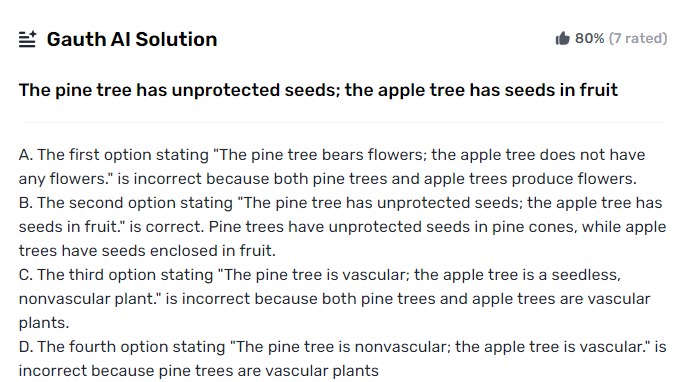Pine trees and apple trees are two notorious instances of the plant realm, both darling for their excellence and the tasty organic products they produce. These two kinds of trees actually reproduce in very different ways, despite their superficial similarity. By comprehending the apple and pine tree reproduction processes, fascinating insights into the diversity of life on our planet can be gained.
Pine trees reproduce through a collaboration called seed dispersal, where their cones release seeds that are passed by the breeze onto new regions. In contrast, apple trees bear fruit when they are pollinated by insects like bees. Let us explore which correctly distinguishes between how a pine tree and an apple tree reproduce? In our given detailed article.
Process of Pine Tree Reproduction
Let’s take a deeper look at the various stages of pine tree reproduction.
Pollination & Fertilization
Fertilization is the most important phase in pine tree generation. Since pine trees are monoecious, they share a single tree with both male and female conceptive designs. This preparation cycle normally happens in the spring when the weather conditions are warm and damp.
Seed Formation and Dispersal
After treatment, the seeds start to foster inside the cones. The seeds gradually mature and develop within the cones’ protective scales over several months. As the seeds are created, the cones go through different variety changes. When the cones have opened and delivered the full-grown seeds, they are scattered in different ways.
Germination
The seeds may germinate and develop into new pine trees once they have been dispersed. When a seed takes in water, it expands and eventually sprouts a root that ties it to the soil. From that point, a shoot rises out of the seed and starts to develop vertically, at last forming into a youthful pine tree.
Process of Apple Tree Reproduction
Apple production and the survival of the apple tree species depend on this procedure.
Pollination & Fertilization
Pollination is the first stage in the apple tree reproduction process. Fertilization happens when dust is moved from the male conceptive pieces of a blossom to the female regenerative pieces of another bloom. When the dust has been moved to the female regenerative pieces of the blossom, preparation can happen. Preparation is the cycle by which the male gametes in the dust join with the female gametes in the ovule to make a treated egg.
Seed Formation and Transfer
After treatment has occurred, the prepared egg starts to form into a seed inside the ovary of the apple bloom. The ovary and the tissues that surround it provide the seed with nutrients as it grows. When the apple has developed, the seeds are spread to new places where they can sprout and develop into new apple trees.
Germination
After the seeds have been scattered, they should go through a cycle known as germination to develop into another apple tree. At the point when a seed takes in water, grows, and starts to grow, this is called germination. With the right consideration and conditions, the growing seed will ultimately develop into a seedling, which will develop into a youthful apple tree.
How to Use Gauth AI For Queries
We’ll show you how to use Gauth AI’s online tool to get the results you need:

Step 1. Open Gauth
Open the Gauth AI online tool in your preferred web browser first. To access the official website, simply type Gauth AI into the search bar.
Step 2. Add your Query Here.
You will see a user-friendly interface where you can enter your query once you are on the Gauth AI homepage. This is where you’ll furnish the instrument with the data it requires to produce text for you. To enter your question, basically type in the subject or brief you believe the device should produce text on.
Step 3. Produce Results
As the AI evaluates your query and generates the appropriate text, this procedure may take some time. You will be able to see the results on the screen once the text has been generated by the tool. The generated text can then be read to see if it meets your needs and expectations.
Sum Up
Apple trees use fruit-encased seeds and insect-aided cross-pollination for dispersal, whereas pine trees use windblown pollen, separate cones, and winged seeds for dispersal. This demonstrates the various methods that plants use for reproduction.

